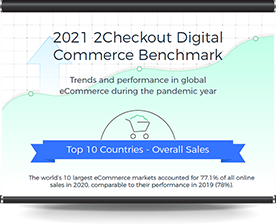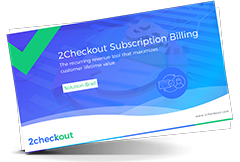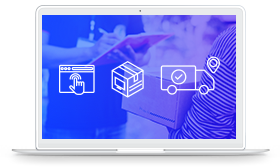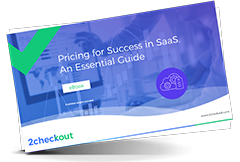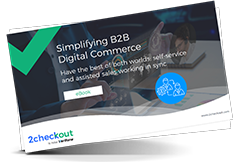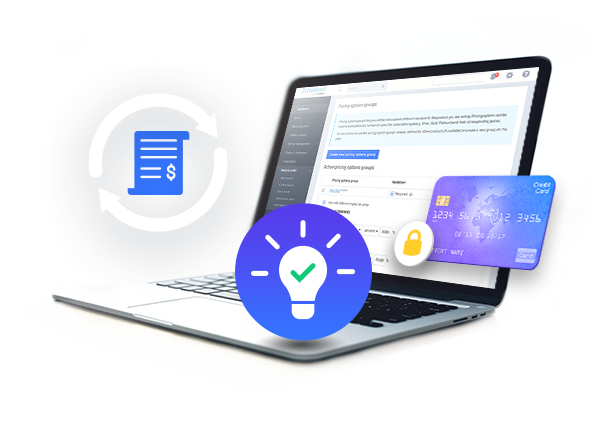Why Start Selling Subscriptions?
Subscription-based eCommerce has grown in popularity because it caters to the needs of merchants and shoppers alike. For shoppers,recurring orders bring a lot of convenience and efficiency - users are able to set up continuous access to a product,with the same minimal effort allotted to one shopping visit - without having to re-submit their preference or payment details every time they need to re-order.
For merchants,adopting the subscription model eCommerce route allows them to boost their business' profitability and operational efficiency. Subscriptions guarantee recurring income,which helps companies forecast and plan for the future. The potential brought by subscription billing,in combination with retention tactics,generates steady cash-flows for companies and increases the customer lifetime value they collect from users.
It is no wonder that subscription eCommerce is a field that is being heavilyinvested in,and expected to attract more and more backers in the coming years. Between 2017 and 2020 alone,subscription businesses attracted a total of $2.5 billion in venture capital funding.
Since online business is a fast-paced sector,subscriptions come with diverse types of automation. Companies that sell subscriptions employ technological solutions,such as APIs,to give customers better control over their subscriptions - such as options to cancel,pause,or upgrade their service. APIs also streamline operations for merchants,allowing them to track subscription data while focusing on growth strategies.
Add Subscription-Based eCommerce to Your Business
If the idea of recurring billing eCommerce is appealing,here are the steps to go through to launch this new avenue.
Step 01:Reconcile user needs with the right subscription model
To discover if your product is a good fit for the subscription model,try validating it with current power users.
Ask your consumers how they would feel about accessing the product/service on a recurring basis and check how they would react to the intended subscription eCommerce model you're considering. Be sure to highlight how the new subscription offering is better than your one-time deal and what benefits come from this route - convenience,affordability,exclusivity,potential to be delighted,or whatever applies to your case.
If your product is new and doesn't yet have an established user base,consider market research approaches with early-adopter respondents or lookalike audiences,to validate your subscription model.
Discover 2Checkout's pricing and billing options for subscriptions.
Sign up for free todayand test the platform for yourself.
To successfully launch a subscription eCommerce business model,with physical goods as part of the offering,you first need to decide what added-value benefits would convince your users to pay on a recurring basis.
Many sellers of subscription boxes,for example,rely on personalization and novelty factors for this. They tailor their offering and unique value proposition to let users know that their subscription will offer a personalized,fresh experience with each renewal. Apparel makers,producers of beauty products,and even wine clubs have seen successful with these approaches - customers love effortlessly receiving novelties from a product category that's dear to them,while merchants find it easier to scale when they secure recurring revenue.
Discounts are another great hook for selling subscription boxes. Some customers will respond well to the option to set up a subscription for replenishments,when it comes with an appealing price. Delivery and shipping are also great hooks in building your value proposition. Marketplaces that sell physical goods,for example,are launching subscriptions that allow users access to free or preferentially priced shipping,as well as access to modern,convenient delivery options,like drop box pick-up.
BLOG
Get your bearings on how to start a subscription model for your physical products with this primer.
Step 02:Package your offering
To find success,you need to package your offering in tiers that make sense to your audience. The challenge here is setting your pricing tiers and finding the right partners for shipment and fulfilment.
In terms of pricing,you will have to test and optimize until you find the best alternative that provides value for your subscribers. A fixed price or flat-rate price per billing interval is a good way to start as you explore what your customers are willing to pay for continuous access to your offering. A free trial is also a good way to get those first initial users signed up and testing your products.
If you're considering more than one subscription tier,make sure that each tier is differentiated and that this information is readily available to users - details of what features each tier should be included,and the benefits it provides must be clearly shared. Companies doing subscription model eCommerce with digital goods have even more complex pricing approaches at their disposal,being able to offer usage-billing or per-seat billing,for example.
EBOOK
Curious about the different pricing models available to software sellers? Read about effective pricing strategies in SaaS and how to choose the right one for your business.
Step 03:Start selling subscriptions online
One of the most important aspects of selling subscriptions online is choosing the right subscription platform for eCommerce. Setting up your offering and showcasing it online is just part of the equation,while the other part revolves around offering a seamless purchase and payment experience with each new renewal cycle. This is possible by using eCommerce subscription software that automates a great part of selling subscriptions and can even handle fulfilment and licensing for digital products.
Many providers offer the option to support recurring payments,including payment service providers who can handle the recurring billing and invoicing parts of the transactions. The best subscription eCommerce platforms,however,go beyond payment processing and include need-to-use tools that tackle the complex aspects of selling subscriptions online.
These tools include automated onboarding that get your users started with the product;CLTV tools that increase the average revenue you get from your users;retention tools that help you keep subscribers around and reduce churn rates;as well as security and protection services that combat fraud. When employed together,these tools help you build and maintain seamless subscription experiences for your customers,in the true "set it and forget it" style shoppers have learned to love.
20,000+ merchants use the 2Checkout platform to scale their subscription operations around the globe.
Sign upfor a free account today to find out how we can help you grow as well.
Step 04:Monitor and scale
After you've set up your subscription-based eCommerce site,your efforts will be concentrated on monetization and retention,to achieve growth for your business. To do so you have to pay very close attention to your financial metrics. Knowledge of current cash flow is useful,but to truly scale the subscription side of the business you'll need to stay on top of many more business metrics.
Some of the most actionable subscription metrics to track include:
Customer Acquisition Cost (CAC) - the average total cost of attracting one user to sign up for your subscription.
Average Revenue Per User (ARPU) - the average revenue you collect from a customer in a given billing interval. ARPU is usually analyzed in correlation with the CAC metric.
Monthly Recurring Revenue (MRR) - the sum of all recurring orders you get from paying customers in a given billing interval. MRR allows you to forecast your business' development potential.
Churn Rate - the percentage of customers who are cancelling their subscription in a billing interval. Cancellations may occur voluntarily (dissatisfied customers,bad product experiences) or without the customer's knowledge (payment method hiccups).
EBOOK
Know what metrics to track! Keep your subscription business healthy by monitoring the following need-to-know metrics in SaaS.
Step 05:Considerations for B2B subscription businesses
Beyond B2C consumer markets,B2B subscriptions also have been growing steadily in recent years,especially during the COVID-19 pandemic. In 2020 alone,subscription software registered a 79% uptick,while new trial subscription growth for business and professional services jumped 115%versus the pre-pandemic period. This represents a huge opportunity for business sellers,but it also brings new complexity to the table.
When launching into eCommerce recurring billing,B2Bs need to consider more aspects than just traditional direct-to-consumer sales. The distribution of subscriptions requires careful consideration of more touchpoints,as merchants in these markets usually employ a mix of channels,which usually also include marketplaces,partners,or resellers. All of these channels should be aligned so that the buyer has a consistent experience at each stage in the buying journey,regardless of the channel they're in;eCommerce platforms with omnichannel capabilities can help merchants in this respect.
Companies selling to businesses also have a more advanced tech stack with which to integrate. What's more,B2B subscription contracts often involve a more personalized offering stage,which includes more than one decision maker from the buyer in the process. For these types of models,more complex functionalities like Configure-Price-Quote (CPQ) are great options,especially since they seamlessly integrate with your existing tech stack,like CRM for example.
 2Sell Accept mobile and online payments from buyers worldwide
2Sell Accept mobile and online payments from buyers worldwide
 2Subscribe Subscription management solution to maximize recurring revenue
2Subscribe Subscription management solution to maximize recurring revenue
 2Monetize Full commerce solution built for digital goods sales
2Monetize Full commerce solution built for digital goods sales
 Add-ons Additional services to boost online sales
Add-ons Additional services to boost online sales
 Login
Login
 Login
Login


